 | Francis Lieber, Edward Wigglesworth - Encyclopedias and dictionaries - 1835 - 618 pages
...proportion, the sum of the extremes is equal to that of the means, and, in geometrical proportions, the product of the means is equal to the product of the extremes, either extreme (or mean) may be found in the former, by subtracting the given extreme (or mean) from... | |
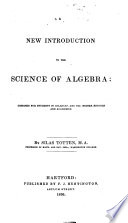 | Silas Totten - Algebra - 1836 - 360 pages
...— . Putting x in the place of the unknown term, the proportion becomes 12 : 4 = 18 : x ; and since the product of the means is equal to the product of the extremes (05), we have 12 xx = 18 x 4, or 12 x - 72 ; and as 1£ times x = 72, it ja 72 evident that x, the... | |
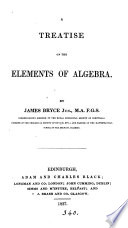 | James Bryce - Algebra - 1837 - 322 pages
...whence we easily find 4. Given, — £— : — ^ — : : 7 : 4, to find ». Since, in a proportion, the product of the means is equal to the product of the extremes (Eue. VI. 16), it follows that 126—7х 10х+8= - 4 - O2 By multiplication, 40 x +32 =126— 7x. whence,... | |
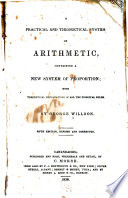 | George Willson - Arithmetic - 1838 - 194 pages
...geometrical proportion consisting of four terms, have been explained on page 92, and the reason assigned why the product of the means is equal to the product of the extremes. This equality between their products suggests an obvious method of rinding any term of a proportion,... | |
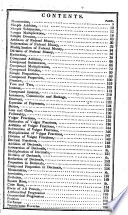 | Arithmetic - 1838 - 218 pages
...rule of three is derived.. In the following proportions the pupil will perceive that in every case the product of the means is equal to the product of the extremes. As 2 : 4 :: 6 : 12 2 : 8 :: 5 : 20 3 : 5 :: 6 : 10 7 : 11 :: 14 : 22 , Now suppose that we had the... | |
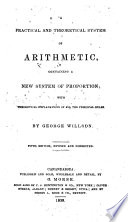 | George Willson - Arithmetic - 1838 - 194 pages
...geometrical proportion consisting of four terms, have been explained on page 92, and the reason assigned why the product of the means is equal to the product of the extremes. This equality between their products suggests an obvious method of finding any term of a proportion,... | |
 | Thomas H. Palmer - Education - 1840 - 328 pages
...contains, or is contained, in the consequent of the second ; and, from this equality, it follows, that the product of the means is equal to the product of the extremes. For, if the numbers of the second ratio be double (treble, one half, or any other number of times)... | |
 | Joseph Denison - Mechanics - 1841 - 210 pages
...= —•; one value of V. Solution 2.—By the third expression, v \ V ; ; - ; —. * i And because the product of the means is equal to the product of the extremes, and dividing by -, V = (4) "OT ; second value of V, by the third expression (which is here used for... | |
 | Joseph Denison - Mechanics - 1841 - 210 pages
...by one of the inclined sides ; that is, P = — S TT By theorem 1, P ; R ; ; — ; S ; and because the product of the means is equal to the product of the extremes, PS=R|; and dividing each of these equals by S, K! From theorem 2 we derive the following rule for finding... | |
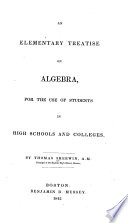 | Thomas Sherwin - Algebra - 1842 - 326 pages
...d, we have ad = b c. But a and d are the extremes, and 6 and c the means. Hence, In any proportion the product of the means is equal to the product of the extremes. 2. Suppose we have ad = bc. Dividing both members by 6 and d, we have r = -, or a : b = c : d. Hence,... | |
| |